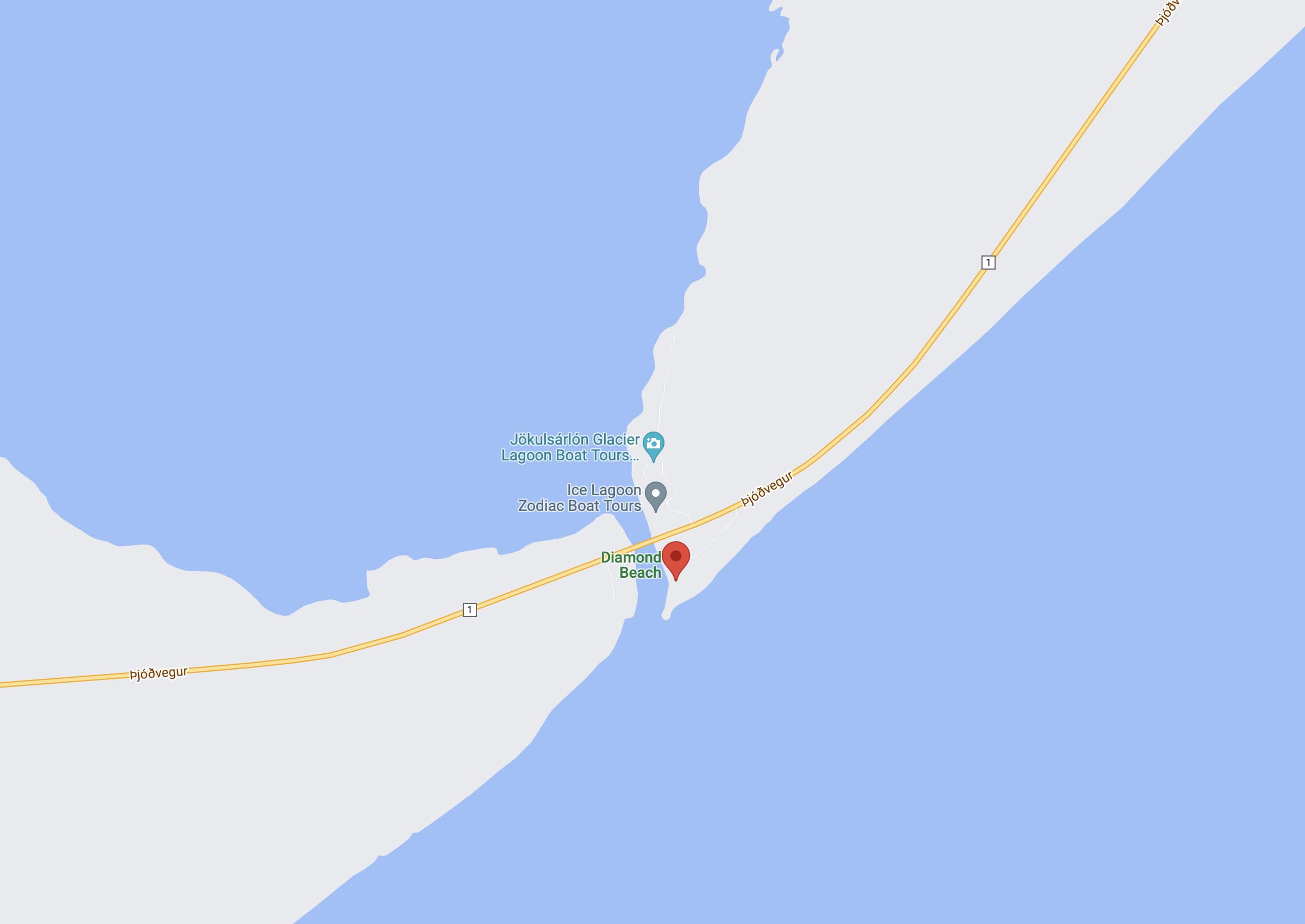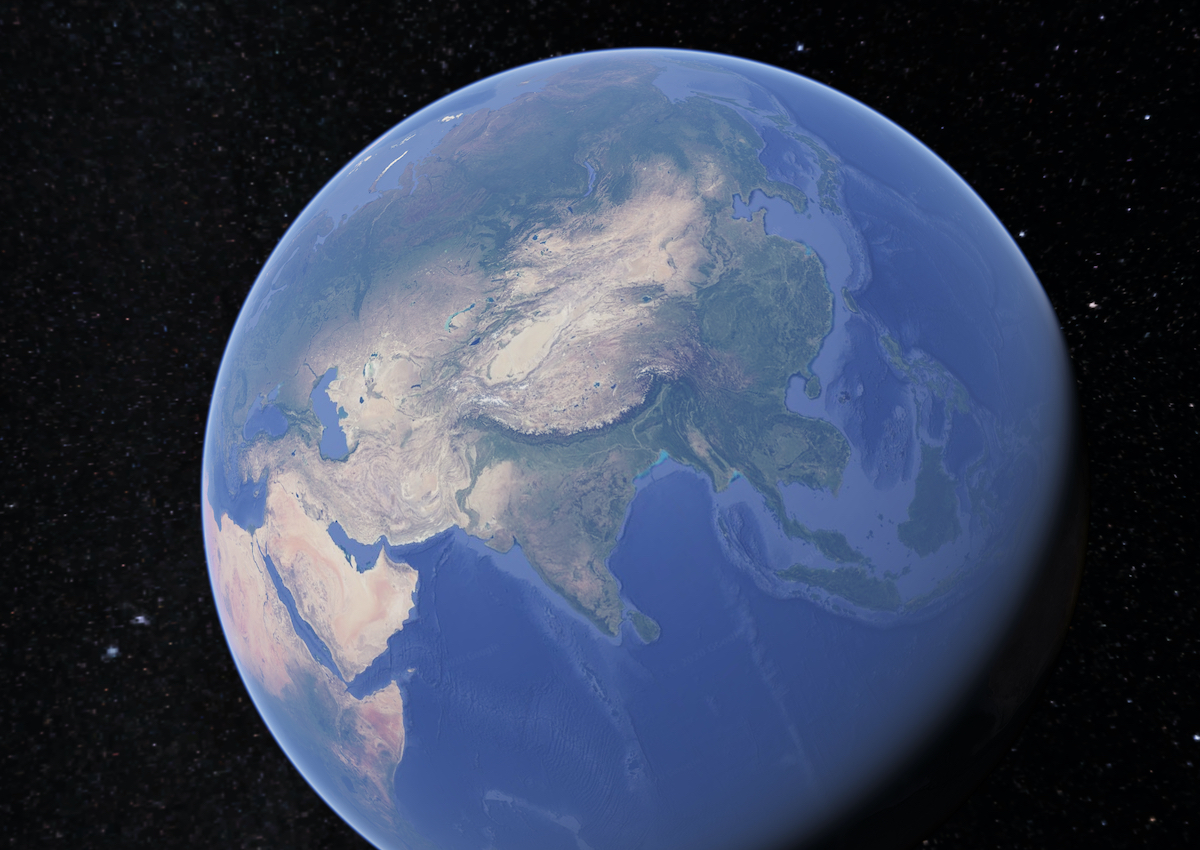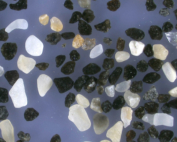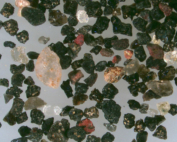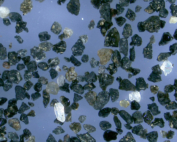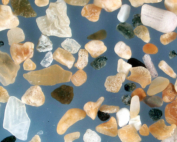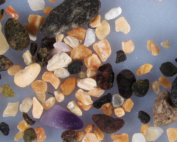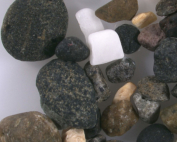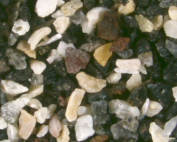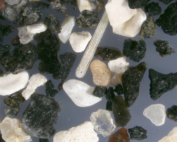
The sand at Diamond Beach consists mostly of dark gray and black volcanic rock broken down by ocean and glacier rivers over centuries to form the black sand beach. White, tan and reddish sand grains also of volcanic origin are also present. The name “Diamond Beach” comes from the gemstone or diamond-like appearance of glistening white ice (not observable in this image) on black sand. See Geographic Overview to see the white ice.


Variably shaped small and dark sand grains of volcanic origin. Occasional larger off-white and reddish grains have more rounded edges compared to sharp edges of the smaller dark grains. The higher magnification shows lighter colored phenocryst inclusions embedded in the dark igneous rock. This sand is entirely of volcanic origin without any evidence of marine sand grains.
Geographic Overview
The unique Diamond Beach, located by the Jökulsárlón glacier lake lagoon, is named for its natural ice sculptures that wash up on the lagoon shore and stand in sharp contrast to the volcanic black sand. As a consequence of climate change, the glaciers are retreating with everchanging scenery of incredible beauty and the size of the glacial lake has increased annually since its development approximately 60 years ago. The glacier lake is reported to have doubled in size in the last 15 years. Icebergs gather at the mouth of the lake’s shallow exit, melt into smaller blocks and float out to sea. The lake fills with herring trout, salmon and other fish brought in by sea tides and provide a food source for seals and a diverse variety of birds.
Sand Gallery
The sand at Diamond Beach comes from dark volcanic rock broken down by ocean and glacier rivers over centuries to form the black sand beaches.

This lower magnification shows the variably sized dark sand grains with a sprinkling of lighter grains and occasional white, tan and red sand grains, all of volcanic origin.

Variably sized black sand grains with sharp edges dominate the volcanic origin of Diamond Beach sand. The black grains contain irregular tan colored inclusions that formed during volcanic eruption millions of years earlier. Some larger quartz-like grains with smoother edges are occasionally present.

The black sand of Diamond Beach consists of variably sized grains with the larger 1mm or greater sized grains having rounded edges from wave and wind action while the small grains have sharp angles indicating less wear from environmental factors. Occasional lighter color quartz and feldspar sand grains are sometime present.





